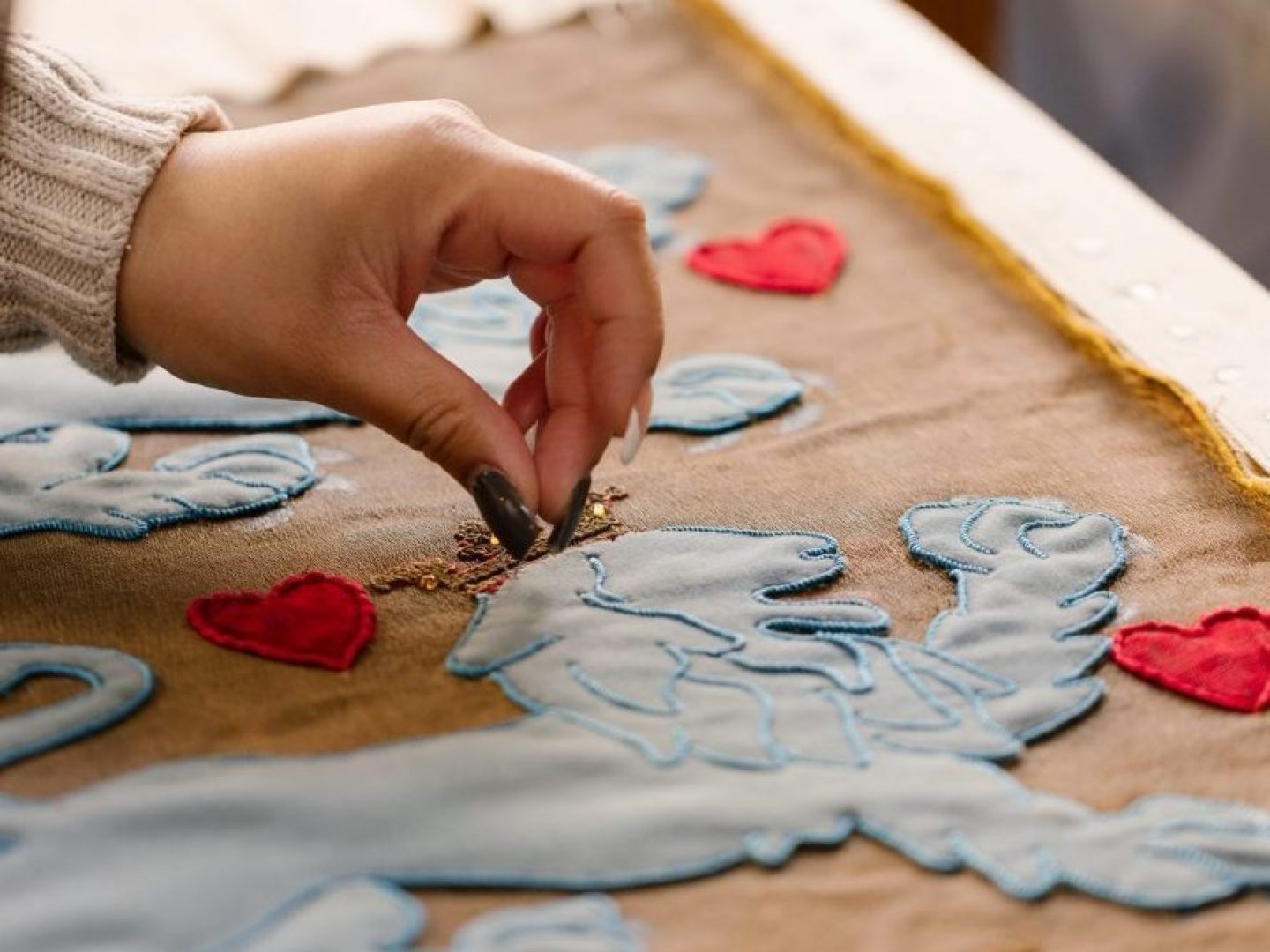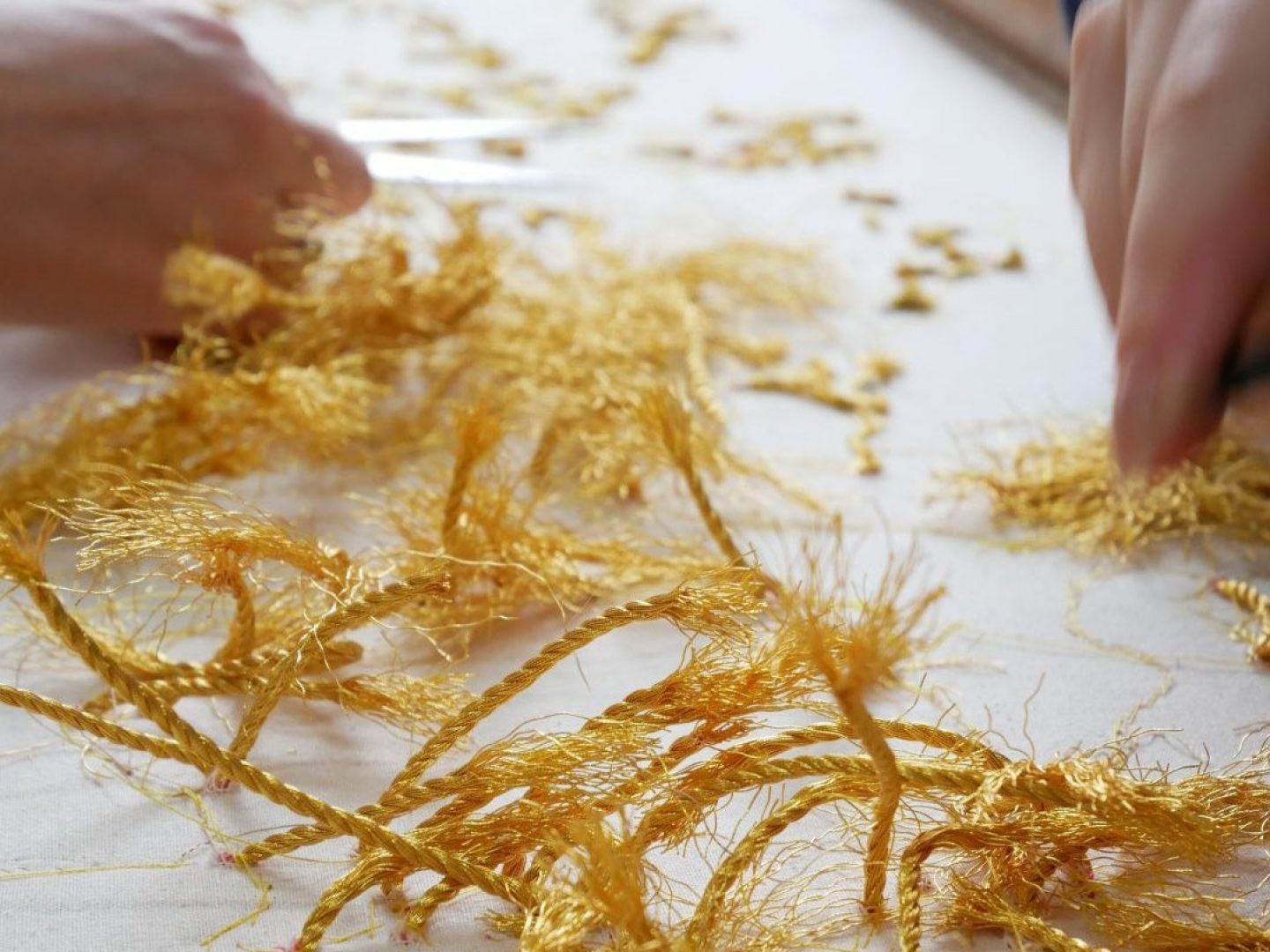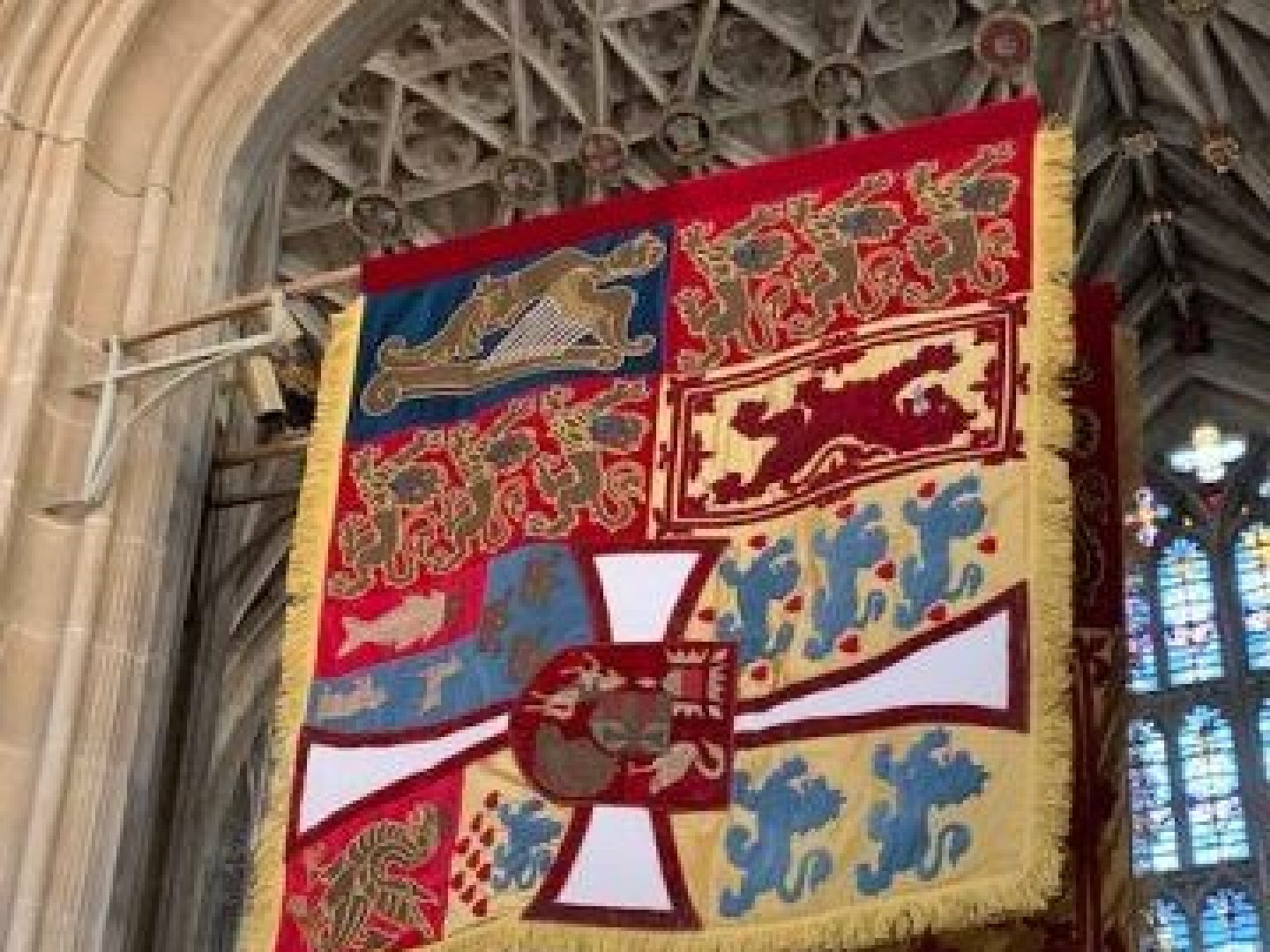

With the Victorians, Britain saw a return to the values and virtues associated with the mediaeval period. Gothic-inspired structures appeared up and down the country, the most notable of which was the mediaeval-inspired Palace of Westminster. The fashions moved from the Greek-inspired Regency style to a more dramatic Mediaeval silhouette. Everywhere, a return to craftsmanship and artisanal skill was a welcome reaction against emerging industrialisation.
The Arts and Crafts movement was born This was an era when machines for sewing, crocheting, embroidering and making lace had been developed. As a result, essential handcrafts were under threat. In 1872 The Royal School of Needlework was founded, to help preserve and sustain the embroidered arts and continue the battle against industrialisation. At the end of the Victorian era, these preoccupations remained relevant.
Emerging into the Edwardian era, under the newly crowned Edward VII, The Royal School of Needlework, now in its third decade, began work on two special royal banners. Having just completed the funeral pall for Queen Victoria and the coronation robes for Edward VII and Queen Alexandra, the royal household had become a significant patron of the embroidered arts.
Just as history is remembered through retelling, transcribing and recording, the cultural objects that illustrate and bring history are protected by successive generations of caretakers. First by making, then remaking, persevering and conserving, these material objects survive through the ages. Whether small objects such as jewellery or vast objects such as cathedrals, these material objects of British history reflect the priorities and preoccupations of the people.
How did two Mediaeval-style banners come to be made in the Edwardian period and why was the hanging so delayed? This is a story that begins with a fear of industrialisation and ends with the triumph of hand embroidery.
Read on to discover how Hand & Lock were granted an opportunity to help preserve two remarkable objects of Britain’s heritage.
The two banners, measuring two by two and a half metres were the official arms of Edward VII and Queen Alexandra and would hang over their stalls at St George’s Chapel. The banners were a return to the traditional embroidered elegance of the mediaeval era. Not printed or painted, each motif would be appliqued and meticulously embellished by hand.
The King’s banner hung above his stall from 1901 to Edward’s death in 1910 and upon Queen Alexander’s death in 1925 the two banners were destined to be hung side by side above their tombs. However, a larger restoration project of the Chapel meant this would have to be delayed.
The banners were separated with the Queen’s banner retained at the College of Arms by Sir Gerald Woods Wollaston, and the King’s banner hanging in St George’s chapel. Finally, in the early 1980s, the Queen’s banner was returned by the Woolaston family and Textile Conservation Centre began work on a much-needed restoration. In 1983, for the first time, the two banners were united above the tombs of King VII and Queen Alexander.
However, the state of the banners was inconsistent and the restoration had failed to adequately address and stabilise the rate of decay indefinitely. In 1995 both banners were removed from public display and stored in the safe confines of the Aerey of St George’s Chapel. They would not be touched again for 23 years.




Twenty years later, Hugo Vickers, former Lay Steward, and now Captain at the Chapel had been in service for over 50 years. He began the Windsor Benefit Trust intending to raise funds for lesser priority restoration projects away from essential major building repairs. Top of the list was the restoration of the two banners that lay in storage.
Hand & Lock had previously worked on Vickers’ Deputy Lieutenant Uniform. In November 2018 he approached the team about the restoration of the banners and Production Director Jessica Pile began a careful process of assessing the damage and articulating a plan of restoration.
It was evident that the extensive damage to the cloth could only be fully determined by causing yet more damage.
The banner had to be opened up and deconstructed before being stabilised and reassembled. While the task of any restoration is to preserve as much as possible, often it is necessary to replace parts that are beyond repair. Sympathetic materials and trims were sought that mirrored the originals used by The Royal School of Needlework over a century earlier.
Taken apart, more issues were discovered to do with the base materials which were now badly worn and incapable of supporting the appliques. These individual appliques were carefully removed, cleaned, stabilised and transplanted onto a more stable sympathetic backing. To arrest further decay, the original parts of the banners were secured under invisible conservation netting which held the worn fibres safely still.
"I told her all about the restoration work - how the velvet was shot through, so replaced, and the lions and harps lifted off, put back under a fine net, and how the team stitched the cording and then the tongues and claws."
From start to finish, the meticulous project took over 4000 hours over four years, involved 20 embroiderers and used over 100 metres of gold cord. The Edward VII banner was handed back to Windsor in December 2019, marking Vickers’ 50th anniversary as a Lay Steward. The Queen Alexandra Banner was completed in early 2022 after progress had been disrupted by the pandemic.
Finally restored and hung together above the tomb, Vickers spoke to the Queen about the project:
“I told her all about the restoration work – how the velvet was shot through, so replaced, and the lions and harps lifted off, put back under a fine net, and how the team stitched the cording and then the tongues and claws”. He added, “The Queen loved that information. I told her they were all happy in their work as they were creating”.
And it was true, the team at Hand & Lock felt the weight of history and responsibility but ultimately were excited to add to the legacy of these historic banners. Jessica Pile spoke about that legacy: “I think it is important to this country to be able to see its history. The banners themselves tell a story of each person, Queen Alexandra’s banner shows her danish background and all the motifs represent something about her. They bring colour to the story”.
“The Queen loved that information. I told her they were all happy in their work as they were creating”.
Spearheaded by Hugo Vickers and accomplished by Hand & Lock, these two elegant banners can now reveal a hidden history. They shine a light on the Royal School of Needlework founded in 1872, Hand & Lock founded in 1767 and of course King Edward VII and his wife Queen Alexandra. They continue to tell us about the people who made them, the people who restored them and the world in which we all live.
Historic objects require an army of specialists to conserve and preserve them. The task is endless with another restoration likely required at some point in the distant future. However, preserving cultural objects of our history is vital. The Victorian and Edwardian interest in the Mediaeval reflected their fear of industrialisation. That is no longer the case. Decades of industrialisation have led to comfort, convenience and more employment. However, we are still compelled to preserve and create things by hand because we value craftsmanship, heritage and precious objects.
